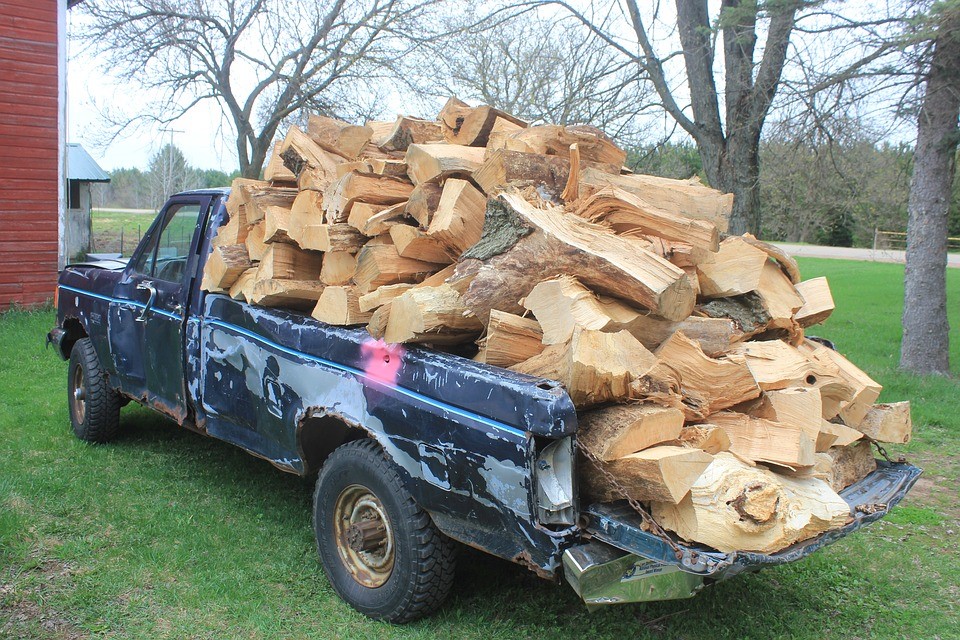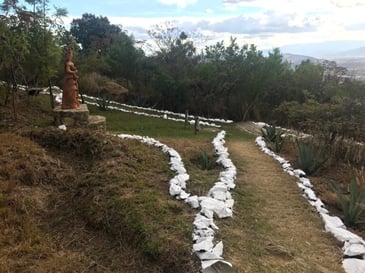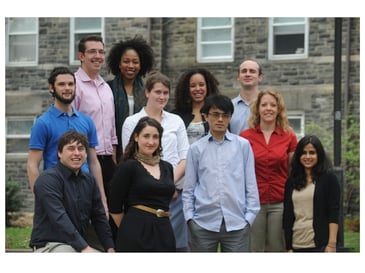Hitchhikers Ride from the Foreign Trees

Spring time is here – the first of two seasons that campers most enjoy will bring friends and families from all around to the Catskills and Adirondacks. If you love camping, you may be planning your trip right now with what equipment you need, what you are going to wear, or even how you’re going to protect your food. You may even consider taking some logs from that tree that fell in your yard.
But are you aware of what is going on inside that wood? Often times we are unaware of the severe consequences that come with moving wood.
Wood and wood products carry hitchhikers everywhere.
Here in NY, there are several diseases and insects that threaten our native tree species, and they all rode on or in a log or board to get here. Some of the big ones are:
- Chestnut Blight: Introduced to America in 1904 on Japanese Chestnut imported from Asia. Chestnut blight reduced approximately 3 billion chestnuts to an estimated 100 individuals in just 50 years.
- Oak Wilt: Discovered in America first in Wisconsin in 1944, Oak Wilt has killed tens of thousands of Oak trees and has been confirmed in New York as of 2008.
- Emerald Ash Borer: Introduced in the 1990s from Asia, it has since killed Ash species in the hundreds of millions nationally.
- Southern Pine Beetle: Since being discovered in the Long Island Pine Barrens in 2014, over 20,000 Pitch Pine have died there.
Invasives’ primary mode of introduction is transportation of wood and wood products, mainly firewood and pallets. Invasive insects and diseases lurk within the bark and the sapwood, and larger insects and their larvae can withstand the cutting process if they are positioned just right. If an infested tree is felled and used to make wood products, it will likely be shipped well beyond its point of origin, and as pallets it could be shipped around the world. While regulations now dictate that wood for pallets must be treated either chemically or with heat, those treatments are only required for international shipments.
Now that we understand how invasive species move, let’s look at what they can do.
Why are invasive species so… invasive?
“Invasive” is widely accepted to mean “non-native pest.” In a species’ habitat of origin, its ecological counterparts are all adapted to its existence. For example, Hemlock Wooly Adelgid (HWA), which threatens Eastern Hemlock in NY (currently known in 43 counties to date), is native to Japan. There, HWA is not a nuisance because it has natural predators and because host trees are well adapted to it in terms of resistance.
Thousands of years of coexistence, if not more, are responsible for the control of HWA. Here, where it is not native, however, there has not been any time to adapt to the insect. Predators that would otherwise be suitable have a larger body of insects to consume – they are not specialized to HWA. Our Hemlocks have no defenses because they have never had to survive against the HWA threat.
This common pattern has the same ending for all trees, including those that matter to everyone.
Invasive species devastate trees that matter.
We care about trees because they provide many products for us. We harvest millions of tons of trees annually for fruit, wood, and sap products. If we lost apple trees we would lose out on apples, cider, and hard cider. Sugar maple loss would take away our syrup. Pine sap is used for turpentine, and many different species are great for wood. Do you enjoy beer? It’s impossible to brew without hops.
Like all living organisms, trees are susceptible to illness. Yet, unlike us who have been around the world developing immunities, trees are bound to the earth — they cannot move and that has made them susceptible to invasive species.
Combined with climate change, invasive species are able to survive in places they could not before. Southern Pine Beetle (SPB), for example, is native to the southern United states such as Texas, Louisiana, and Arkansas. Yet the gradual increase in annual temperature has allowed SPB to survive winters and devastate pine trees along its way to New York.
We can slow and even prevent invasive species dissemination.
We are able to enjoy the sight of trees in our landscape when we are hiking and camping, but many factors such as climate change have been making that joy of life a more difficult one to preserve. We must take our land back and save our trees, and this is achievable in two simple ways.
The first is to keep watch over trees. When you’re walking up that steep hill and you need to take a break, just sit, relax, and look at that pine or oak there in front of you. Note what is common between them and every other tree of its species. After years of knowing what a healthy tree looks like, you can spot what doesn’t belong and report it to the NYSDEC.
The other is to make just one extra decision when planning a camping trip, and that is to source wood locally. This single action can save millions of trees every time you choose to leave your wood where you found it (inside of 50 miles), and that will make YOU the hero of the woods.
Originally published on the Bard CEP EcoReader.




